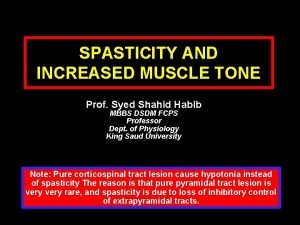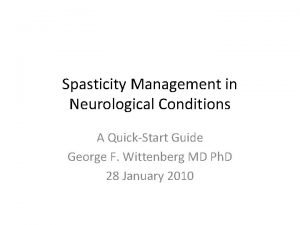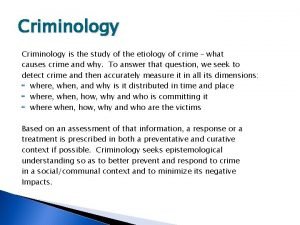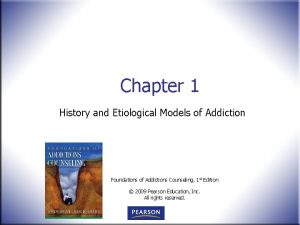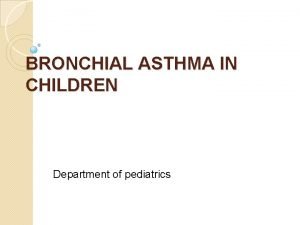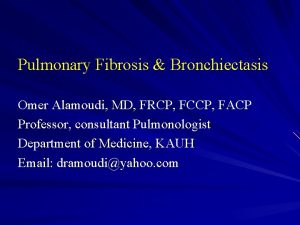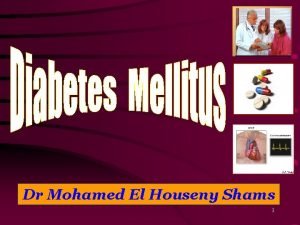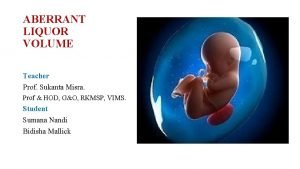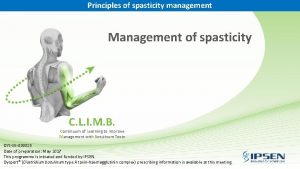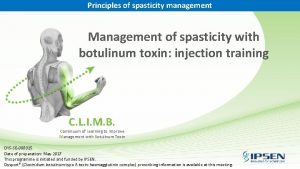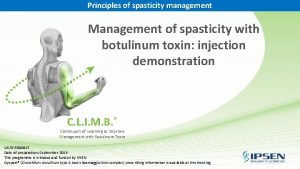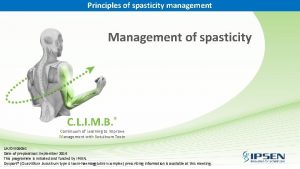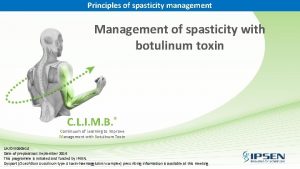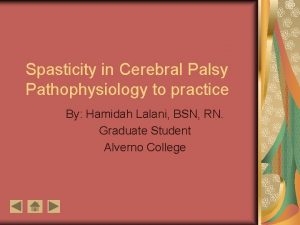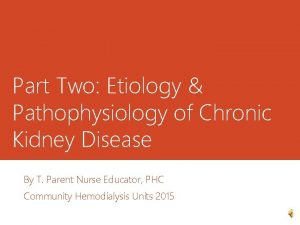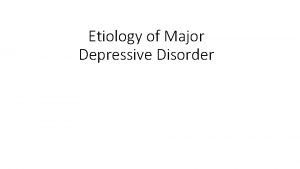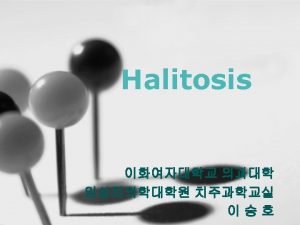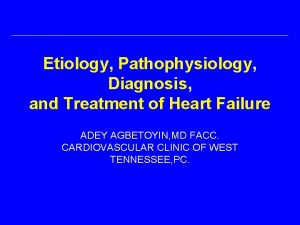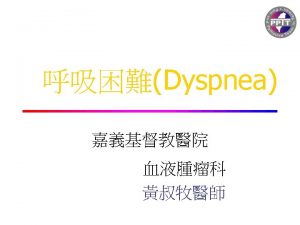Spasticity Etiology Pathophysiology and Associated Features Part 1













- Slides: 13

Spasticity: Etiology, Pathophysiology, and Associated Features Part 1 of 6 www. wemove. org Spasticity Slide Library Version 2. 3 - All Contents Copyright © WE MOVE 2001

Definition of Spasticity • “Spasticity is a motor disorder characterized by a velocitydependent increase in tonic stretch reflexes (muscle tone) with exaggerated tendon jerks, resulting from hyperexcitability of the stretch reflex, as one component of the upper motor neuron syndrome. ” -- Lance, 1980 • Tonic Stretch Reflex – Tonic muscle response to vibratory stretch – Tonic response to a phasic stimulus • Thus spasticity = velocity-dependent increase of muscle response to phasic stretch, routinely tested by tendon taps or passive mobilization www. wemove. org

Etiologies • • Cerebral palsy Stroke Multiple sclerosis Traumatic brain injury Spinal cord injury Anoxia Neurodegenerative disease www. wemove. org

Pathophysiology of Impairment After a Central Nervous System Lesion Gracies et al. , 1997

Pathophysiology of Spasticity • Not completely understood, despite considerable investigation • Interruption of descending inhibitory pathways • Rearrangement of spinal circuitry www. wemove. org

Stretch Reflex Pathway

Pathophysiology of Spasticity: Established Mechanisms • Alterations within the reflex arc – Change in muscle active properties (increased ratio torque/EMG) – Change in muscle passive properties (decreased extensibility) – Decreased pre-synaptic inhibition, at least in paraplegics – Increased fusimotor activity and increased excitability of the alpha motor neuron have not been established www. wemove. org

Pathophysiology of Spasticity: Established Mechanisms, cont’d • Mechanisms affecting the reflex arc – Decreased reciprocal Ia inhibition on extensors – Decreased non-reciprocal Ib inhibition – Decreased inhibition from flexor reflex afferents www. wemove. org

Phenomena Commonly Associated with Spasticity • Abnormal cutaneous reflexes (Babinski sign) • Spastic dystonia – muscle contraction present at rest, dependent on tonic stretch – significant contribution to deformity • Spastic co-contraction – abnormal antagonist contraction present during voluntary agonist effort, dependent on tonic stretch on antagonist • Extra-segmental co-contraction – abnormal contraction distant from the muscles involved in a voluntary effort www. wemove. org

Phenomena Commonly Associated with Spasticity, cont’d Other types of muscle overactivity (present with yawning, breathing etc. ) • Muscle shortening – consequence of both immobilization and muscle overactivity • Motor weakness – significant source of disability www. wemove. org

Disabling Phenomena Associated with Spasticity • Muscle shortening, motor weakness, and stretch-dependent muscle overactivity (spastic co-contraction and spastic dystonia) are probably the most disabling features in spastic patients. Three logical solutions in therapy: muscle lengthening, motor training, and local muscle relaxation www. wemove. org

Impact of Spasticity

Impact of Spastic Disorders on Quality of Life • • Mobility Hygiene Self-care Sleeping patterns • • Disfigurement Self-esteem Affect and mood Sexual function www. wemove. org
